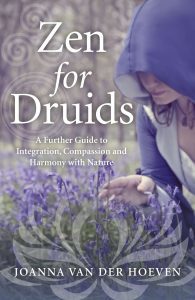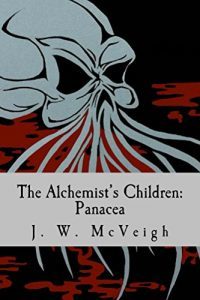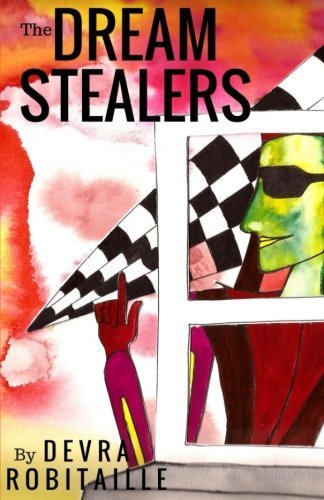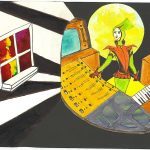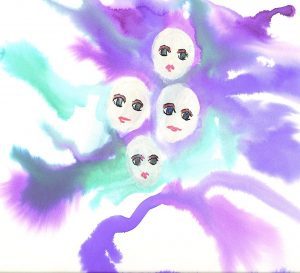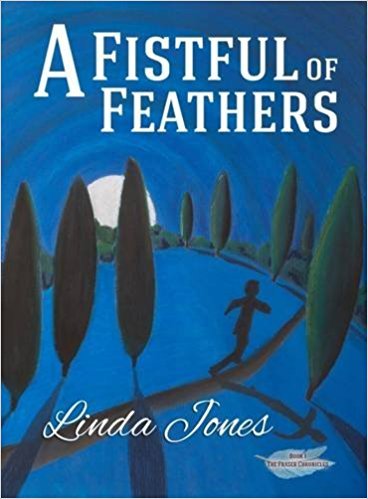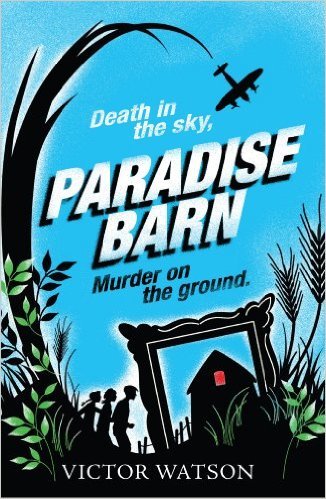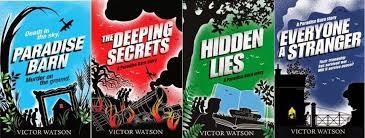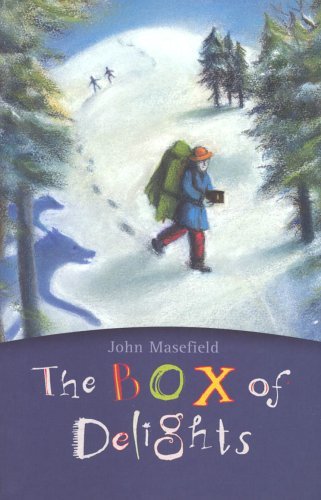Alison Cooklin's Blog
May 8, 2025
Hello world!
Welcome to WordPress. This is your first post. Edit or delete it, then start writing!
September 13, 2017
‘Zen for Druids’ by Joanna Van der Hoeven
East meets West in this fascinating book which skillfully draws together these two spiritualities into a united way of living and of viewing the world. The Zen philosophy of Buddhism teaches the discipline of mind whereas Druidism unites both mind and soul with the Earth and Universe.
The book is arranged into five main sections: Druidry and the Dharma explains the fundamental ideas of the two philosophies, Wheel of the Year gives great detail of the Druid stages of the year, the natural patterns of the Earth which can be echoed in the human cycle. Meditation gives in-depth descriptions of both seated and walking meditations, with helpful hints as to how to approach and practice meditation, as well as explaining its benefits. Mindfulness again explains how and why this practice can enhance your life and enable you to fully embrace the ideas of Zen and Druidism. Integration, the final chapter, draws these threads together and explains the ideas of self and ego and how to manage them.
At the end of each chapter there are a number of related questions to challenge the reader’s comprehension and help bring the ideas into practice. I think this is a useful technique which invites the reader to actively engage in the ideas rather than passively reading and forgetting them.
The author’s writing style is clear, approachable yet authoritative and wonderfully explains these sometimes complex thoughts. The arrangement of sections and their chapters also make it a useful reference guide for any students of Druidism.
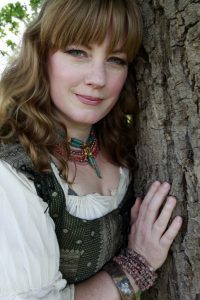
Joanna van der Hoeven
The author Joanna is well qualified to write about this subject. She is currently the Media Co-Ordinator for The Druid Network and is also the Director of Druid College UK. I asked her how she was first introduced to Druidry. She explained:
‘I came across Druidry first, but couldn’t really get into it at is seemed all “in the head”, so to speak. It was a lot of intellectualising, and it didn’t really stick with me with at first. I then came across Zen and Buddhism, and practiced that solidly for a few years before coming back to Druidry. I found a wilder, earthier version of Druidry through Emma Restall Orr, and I took her course and studied with her for a year in the Cotswolds. It was a transformative experience. ‘
The author also has another best seller, ‘Zen Druidry’, also published through Moon Books. Why did she feel another book on the subject was needed?
‘I wrote ‘Zen for Druids’ because’ Zen Druidry’ was only an introduction to the subject. All of the books in the Pagan Portals series through Moon Books are 100 pages or less, and offer an introduction to a subject. I felt that there was a lot more to say, and so I wrote this as a follow-up to the introductory book, should people be interested in taking the concepts further, as well as introducing new ones.’
Amongst Joanna’s many talents, she is also a poet. Who are her favourite, most inspirational poets?
‘I love the poetry of the Romantics. I love Yeats, Tennyson, Noyes. I also love Mary Oliver – I find her work sings to my soul.’
And finally, are there any more projects in the pipeline?
‘I currently have another Pagan Portals book book due out next year with Moon Books, which combines Wicca, Witchcraft and Druidry and is entitled ‘The Hedge Druid’s Craft’. I’m also currently writing a full length book on Hedge Druidry with Llewellyn, which will be available in 2019. No rest for the wicked!’
To find out more about the author, her work and courses on Druidry check out her website www.joannavanderhoeven.com
To purchase a copy of ‘Zen for Druids’ click on this link:
June 14, 2017
Y.A. Sci-Fantasy meets Lord of the Rings
‘The Alchemist’s Children: Panacea’ by J.W. McVeigh is a tech-fest treat which combines advanced technology with ancient folklore.
The hero of the tale is Callen, a fourteen-year old computer geek who is also battling cancer. Following an attack by robotic demons, he and his sister Ania discover their true heritage. They belong to a family of demon-busting warriors. Their mum, Eve, is one of the toughest! When she is critically injured by the strange cybernetic demons, Callen sets out on a quest to use his astonishing ability with computers to create a weapon that can defeat these demons and find a cure for his dying mother. Along the way he is assisted by his Native American dwarf grandfather Corth, his psychic sister Ania and their new friends Sadie and Tende. They all live in the city of Philadelphia, where above ground elves, kindly trolls and other occult beings blend with the human world. Below the city is where the darker forms of occult beings live.
When their friends are kidnapped by gremlins, Callen and Ania are forced to enter the underworld of the city. This is where the book takes a gruesome turn and may not be suitable for those of a squeamish nature. Child sacrifice, blood and gore feature heavily. This is also where the mystery of Callen’s missing scientist father, Alexander, is expanded on. His father disappeared ten years earlier and no one knows what has become of him. He is known as’ The Alchemist’ to those above ground and as ‘The Forger’ to the gremlins and goblins that live beneath. We are given glimpses of the father through Callen’s memory flashbacks and we learn that the father’s quest for a cure for Callen’s cancer has resulted in gremlin myths and religions that divides them in civil war. In order to have the kidnapped friends freed by the gremlins, Callen and Ania are forced into an uneasy alliance with some gremlin warriors, including a rogue gremlin known as Niknak. They are seeking ‘Forgeholm’, Callen’s father’s secret laboratory, which holds the key to the mystery. They must face the horror of goblin hordes and the plot reveals as many twists as the tunnels that they travel through.
This book would appeal to those who love a combination of tech, horror and Lord of the Rings. Gamers will definitely enjoy the use of weaponry and computer skills for some goblin slaughter. So what led the author, J. W. McVeigh, to write such a saga?

J.W.McVeigh
“I wanted to tell an American sci-fi fantasy epic with a the hard science foundation that Harry Potter lacked. This was mostly due to the fact that I love fantasy, but as an engineer I love the science too. I wanted to get people interested in both.”
McVeigh has a strong scientific background which helps give the book real credibility.
“I’m an engineer with a background in nanotechnology and semiconductors. This provides my basis for understanding the technology. Because my father is a technical patent attorney, I grew up learning about advanced tech. Thus, it’s second nature to me. My best friend is an IT cyber security expert and his wife is a programer.”
I asked McVeigh if this a one off, or can we expect more adventures from ‘The Alchemist’s Children’?
“It will be a series. I’m estimating 4 to 6 books. I also have an adult prequel series in the works already about Eve and Alexander.”
And McVeigh’s talents don’t end there. He is also an illustrator and designed the cover for his book. To see more of his work click on this link:
http://jwmcveigh.deviantart.com.
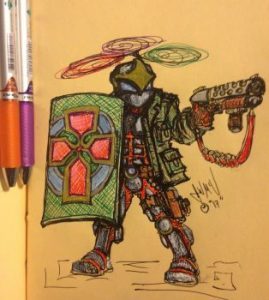
Alchemist series concept sketch
‘The Alchemist’s Children: Panacea’ is published by Spiral Press and is available to buy on Amazon.
April 19, 2017
‘The Dream Stealers’ kids sci-fi adventure
The Dream Stealers by Devra Robitaille is a sci-fi adventure story for readers of approximately age 9+ . The heroine is 15 year old Devin who lives alone with her father. She appears to be an ordinary teenager but with a difference: her father can build spaceships! When he disappears one evening in his spaceship, the vessel returns empty and Devin is faced with waiting for his unlikely return, or to enter the spaceship and search for him in the vastness of the universe. She of course decides bravely to try and rescue him, and so her story begins.

Devin
The story is almost in two parts. The beginning is of a brave but frightened girl who finds herself in strange worlds inhabited by mostly friendly aliens. As a frightened girl, anxious for her father, her reactions to the situation are often extreme, ranging from angry, to sulky, to scared. She has no control over the situation and relies very much on her mysterious guide, Olam, a green lion-shaped alien. She is suspicious of his secrecy but he is her only chance of safety and guidance in a confusing world.
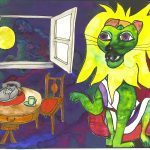
Olam
She is at last reunited with her father Nighida, only to discover that his disappearance was a ruse to get her to follow him and join his friends on a secret mission: to defeat the Dream Stealers.
This is where we learn more about who these mysterious Dream Stealers are. They are a band of galactic outlaws who steal the dreams and aspirations of others, leaving their victims in a vacant, catatonic state.
The story now takes a different turn. The sulky, scared child becomes a bold flying cadet who excels in her classes due to psychic skills she has inherited from her alien mother ( a thread that is dangled but to be explored, I suspect, in subsequent books).
At this point I was reminded of Star Wars and the young Luke Skywalker in training. Devin is no longer a child but a confident young adult. The technical vocabulary at this point might be tricky for some younger readers. Her secret missions expose her to new challenges and she matures rapidly, forging new friendships along the way.
My favourite part about this book is actually the concept of the Lumis, a spiritual, musical alien race who have been almost wiped out by the brutal race called Agra. This is the setting of the story, described in a rather poetic prologue, of different races at war and of the planets that form the backdrop to the story.
Another aspect is the gorgeous artwork that the author herself has created. Devra Robitaille is not only an author of children’s stories but also a musician and composer. I asked Devra if her musical background had influenced her creation of the Lumis. She replied:
‘Absolutely my musical background inspired the Lumis. At the time I came up with the idea for The Dream Stealers I was living in London as a professional musician at the time, working in the London sessions scene and I would often be in the studios very late at night. One night I got home and was so tired I was literally stumbling around trying to get ready for bed, and in that altered kind of state the idea of the Lumis flooded in, swiftly followed by the idea of a young girl exploring the world of dreams, but as a kind of alternate space fantasy reality— pretty hard to explain, but it sort of all flooded in at once.’
The author has confirmed that there is a sequel coming. She says:
‘Yes I already have an outline for the sequel, Devin is going to visit the underground city of the Lumis……(not going to spoil the rest, but I have a pretty decent idea of where I want to go with it)’
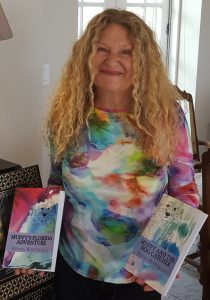
Devra Robitaille
And finally….I wanted to know what Devra’s favourite children’s books had been. I believe the books that we love as children have a profound influence on us, on our views, our dreams and our aspirations. They also inspire us to write our own stories. These are some of Devra’s favourites:
‘The Wind in the Willows; Winnie the Pooh; Alice Through the Looking glass ; Narnia and the Hobbit. And then going on to more mature ones like Herbie Brennan’s Faerie Wars Chronicles (at least the first two books anyway); and Isabel Allende the City of the Beasts and Michael Scott The Secrets of the Immortal Nicholas Flamel’
‘The Dream Stealers’ is published through The Hologram Library (www.thehologramlibrary.com) and is available on Amazon in kindle and paperback.
March 13, 2017
Children’s thriller ‘A Fistful of Feathers’
‘A Fistful of Feathers’ is Linda Jones’ debut children’s novel. Thirteen year old hero Jo is an orphan who has been raised by a series of unpleasant foster families under the pay of the sinister Dr Bowden. Jo has a mysterious and painful growth on his neck that slips down to his back, causing him even greater agony. This is when his unhappy life takes a sudden turn. Aided by a school friend Dan, he manages to run away from his awful foster parents and the clutches of Dr Bowden. This is when his real story begins and when his life truly begins to unfold.
This is a gripping page-turner of a book. The tension is effectively maintained with short chapters, which also will make it is easier for younger children. This is a thriller written for children with interesting twists that children 10+ would enjoy as well as Young Adults. There is death and danger aplenty as Jo struggles to keep hidden from Dr Bowden’s henchmen. However it is also an uplifting tale of friendship, as Jo’s new friends help him to discover at last how to be a normal teenage boy. Well, as normal as a boy can be with giant wings growing out of his back.
Jo demonstrates a great deal of courage, particularly in the early part of the book when he struggles to survive alone with very little money and supplies and at the same time having to deal with terrible pain. He is unaware at this stage what the mysterious growth actually is. That fact is revealed to him by Dan’s startled father. At this point in the story Jo finds himself in a strange position. He is surrounded by people that care about him and want to protect him, which is something he has never experienced before. His wonderful friend Dan, who has all the characteristics of a normal teenage boy, helps Jo to accept his strange affliction. The Fraser family soon have Jo fully under their care and Jo grows in confidence. They journey to Scotland, ostensibly as part of a youth club trip to a Judo competition. However Jo’s enemies are never far behind. It is a case of teenage children outwitting dangerous criminals and it all leads up to a satisfying climax.
Judo and other martial arts play a significant part in this story and there are many wonderful and detailed descriptions of it. I feel quite inspired myself to take up the sport! I asked the author was she an expert herself or did she have to do a lot of research? She told me:
‘The martial arts elements did involve some research, the Escrima especially, but both my children did judo for a year or so, along with tai chi. Even I did a few sessions of tai chi and I wish I’d kept it up! My son really benefited from the Katas in judo, and all the repetitive training (he also has developmental dyspraxia). I had no qualms about including all that in the book – it was, and is, an amazing sport/discipline, one that can be practised and enjoyed at any level.’
But that is not the end of the story. This debut novel is the first of ‘The Fraser Chronicles.’ The second book,’ Fight and Flight’ will hopefully be out later this year. The author Linda says that many of the same characters are in there but with a couple more to’ stir things up’. As she puts it, ‘needless to say, things don’t go smoothly and there are definitely a lot of close calls, and some funny moments!’

Linda Jones
I asked Linda what inspired her to write this story. She replied:
‘Why did I write A Fistful of Feathers…? The story had been in my head for ages. Do you remember some years ago, those photographs of a mouse with an ear growing out of its back? Well, I think that’s when the original idea flickered into life! I also happen to love Science Fiction – I spent my twenties reading Asimov and Arthur C Clarke. Add to that a fascination with fantasy, Tolkien especially, and I think you can see where the inspiration comes from. ‘
Linda also loves writing poetry. She likes to perform ‘story poems’ in front of schools and youth groups. Two of her favourite story poems that she has composed recently are ‘The cupboard under the stairs’, and ‘The day the sun exploded’.
‘A Fistful of Feathers’ is published by The Writing Hall and is available from Amazon priced at £7.99
www.amazon.co.uk/Fistful-Feathers-Boo...
February 23, 2017
Children’s World War 2 murder mystery ‘Paradise Barn’
‘Paradise Barn’ by Victor Watson is a wonderful and evocative story for children of reading age 9+. The main characters are two best friends, Molly and Abigail, and an evacuee called Adam. If surviving air raids is not adventure enough, they take it upon themselves to solve a local murder that has the police baffled. They soon find that the murder is related to the theft of a priceless painting, but instead of revealing their discovery they choose to hide the painting until they understand more, thus putting themselves in danger.
What I particularly enjoyed about this story was the richly detailed description of the air raids which take place both in the East Anglian countryside and in London. It was easy to picture the swarms of enemy aircraft, the sounds of bombs and destruction and the dog fights between the German aircraft and the valiant RAF. Victor Watson also paints a clear picture of the stoicism of a country under attack. For the children, the war is just part of their everyday life and they accept and make the most of their circumstances.
In addition to the immediate story line of the children’s adventures, it is also a wonderful study of friendship. The two girls spend almost all their waking moments together, whereas the character of Adam is a more introverted though friendly personality who enjoys spending time with the girls but is happiest alone, drawing his incredibly detailed pictures. The author uses Adam’s keen artist’s eye to add a child’s clear perception both of the aircraft in the sky and the people around him.
It is a wonderful first book in a series of four. Details of the books can be found on Victor’s website: www.paradisebarn.com . I personally cannot wait to read the rest of them. A 45 year old can enjoy them just as much as any child!
January 11, 2017
Review of ‘Journey’, the Oregon Wolf that made History’
Wolves? Why should we be interested? Aren’t they dangerous?
Wolves are amazing. They are dangerous to their food but not to humans. In fact wolves go out of their way to avoid us, and with good reason. They have been hunted to death all over the world, because they pose a potential threat to the livestock that humans want to protect. But they are an essential predator who keep a natural and healthy balance in their environment.

OR-4, Journey’s father
In Beckie Elgin’s book ‘Journey: The Amazing Story of OR-7, the Oregan wolf that made history’, she uses the remarkable true story of a wolf named Journey, who had been bred in the wild from parents who had been reintroduced ( see his handsome father OR-4 in the picture above), to help children and adults alike understand fully what it is to be a wolf, of their history with humans and why they are so important to our natural world. The author’s own interest in wolves began as a child when she was given some wolf cubs to rear by her father, who ran a zoo in Iowa.
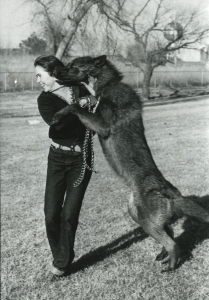
Beckie Elgin with Akela
The author has split the book into two parts: Within highlighted paragraphs she tells Journey’s story through his own eyes, based on the author’s own experience of wolves and her studies ( the author also gives full references of her sources at the end) which sits alongside facts and photographs not only of Journey but of the history of wolves, their environment and their reintroduction which led them to settle in Oregon. The terminology in the factual sections is very well explained but younger children may find those sections challenging and also some of the realities distressing. However this would be an great book for older school children interested in wildlife, or indeed any adult. And although this concerns the reintroduction of wolves into the wild in the States, it is a subject that is relevant all over the world. Here in the UK there is an animal charity attempting to reintroduce wolves back into the wilds of Scotland: http://www.wolvesandhumans.org/wolves...
‘Journey’ would be an ideal text book for schools and libraries as well as an interesting read for children who are keen on wildlife and nature. The book is well laid-out and divided into easy, short chapters, lovely photographs and illustrations and at the end the author has included a glossary and lots of references and useful websites that children can follow up on if they are interested to know more. This is a link to the author’s own website: https://wolvesandwriting.com/

Wenaha wolf pup
To purchase a copy, you can follow this link to amazon:
https://www.amazon.com/Journey-Amazin...
For every book sold, a portion of the proceeds goes to support Oregan Wild : http://www.oregonwild.org/
December 19, 2016
What does the word ‘spiritual’ mean to you?
Religion? Your emotions and higher thoughts? Things relating to the soul? Or a feeling of connection with the Earth and all living beings? A connection with heavenly beings?

La Collegiale, Candes St Martin, France
The reason I am keen to debate the definition of ‘spiritual’ is because it is a word that I use to try and reach out to like-minded people, and also to explain the aspect of my children’s books which are both fantasy stories and also dealing with what I understand as ‘the world of spirit‘. And then I realised even I am not sure what I mean by ‘world of spirit’. So here are my thoughts about what I mean by spiritual.
Firstly, I picture the spirit as being the living breath of us, the vital spark that animates this physical body. So how then is spirit different to soul? Are they the same, are they separate or are they inextricably combined? But then, if the spirit meant the same as ‘soul’ why do we not use the term ‘soulful’ as a synonym of ‘spiritual’? Because when we use the term ‘soulful’ we are referring to something that expresses our deepest and heart-felt emotions. When we use the term ‘spiritual’ there is an element of intellect and of the mind being involved.

Walking in nature
Is the word ‘spiritual’ exclusive to humans, or can other living creatures be described as ‘spiritual’? The reason I am musing on this question is that being amongst nature is a real stimulus to the feelings and thoughts that could be termed ‘spiritual’. I find more spiritual inspiration when walking alone in the lovely Suffolk countryside than I do when being amongst other humans. Is it because the world of spirit is present in all living things? Or simply that nature provides the sense of peace that enable these ‘higher thoughts’ to blossom?
Now that is another term to ponder. ‘Higher thoughts‘. For me, I think of ‘higher’ thoughts as being thoughts, ideas and intentions that are free from all negative emotions such as fear, greed and hate. They are thoughts that are beyond the material world. They are thoughts which are focused on the purpose of life, on how to be happy and how to make others happy.
So far I have not touched upon the aspect of God or heavenly beings. Some have their religion which clearly defines this world of God and creation. For others, they do not believe in a specific deity but they feel there is more to life than this physical world that we see. For me personally. ‘world of spirit’ is the existence of souls, angels and the great Source ( aka God ) in heaven. But also ‘world of spirit’ exists here on Earth, in nature and in all living creatures. We are all united by the one Great Spirit.
So in conclusion, what do I mean when I use the term ‘spiritual’? After these musings, I will use the term to apply to all things that are inspired by or pertaining to the world of spirit that I have just described. But what do you think?
December 15, 2016
Can you recommend inspiring children’s books for me review?
I am on a mission: to help support and promote fellow authors of children’s literature by reviewing them on this blog. I am looking for book recommendations with certain criteria:
Books that you think are brilliant but maybe are not very well known and that could do with a boost
I am especially looking for the reading age group 8+, as it is a time when children can read a book for themselves but this age group seem to have less books available than younger children or Young Adult.
Books that have a spiritual depth. I don’t necessarily mean religious content, but books that inspire a child to think about their world, their relationships with others and of things beyond their normal lives. Examples are Phillip Pullman’s trilogy ‘Dark Materials’ or C. S. Lewis’s ‘Narnia Chronicles’. Its a very vague description I know, but I suppose it is what you might categorise as ‘Mind, Body Spirit’ children’s fiction. However it can encompass any genre: Sci-fi, magic, fantasy, realism. Just explain why you think it has that spiritual depth.
I need to be able to borrow them from a library, so they must be available through the British Library lending system (PLR) unless someone, perhaps the author or publisher themselves, would like to send me a physical copy or e-book copy. Please contact me for details if so.
I am greatly looking forward to your recommendations, thank you!
December 7, 2016
Re-opening the ‘The Box of Delights’
‘The Box of Delights’ by John Masefield is, for me, the ultimate Christmas story for children. But I wanted to understand for myself, just what is it that makes it so deliciously nostalgic and magical? The inner child in me looks forward to watching the BBC TV adaption of the book each Christmas with my children. But this year I decided to re-read the book, in order to try and understand just what makes it so special.
Firstly I think that it is because the book was first published in 1935. It is the perfect setting for the idyllic Christmas of the past. A Victorian Christmas has the edge of the huge class divide and every tale of Christmas luxury is tinged with a suffering, poverty-stricken soul. The two World wars were an austere period, but the 1930’s falls just right, in a time of hope and when treats were more readily available. A Christmas from the past always feels as if it is truer to the spirit of Christmas, because it is the spiritual aspect that is the most satisfying aspect.
However, before we get on to the ‘Spirit of Christmas’, let’s talk indulgence. The food descriptions in ‘The Box of Delights’ are just mouth-watering. Right from the start it is fresh muffins from Bob the Bakers and hot buttered eggs (I have no idea what they are, but I want some). This was an era of wonderful vintage treats such as plum pudding. Plum Pudding. Even the sound of the words is deep and satisfying. I have never had a home-made plum pudding but in my mind it is dark, shiny and succulent with whole baked plums, and wisps of steam rising from its smooth surface. Then in the book there is the occasion when the hero Kay and his friend Peter raid the larder for a pre-dawn breakfast. This is the description:
“They went down into the larder, and got themselves ham and bread, which they spread with blobs of butter. Then, each had a big mince-pie, and a long drink from a cream pan.”
Now I would probably be a bit sick if I ate all that at dawn, but the description is so lush I love the idea of it. Also, having a larder to secretly scoff in is so much more exciting than just raiding a fridge.
The other elements which make this story such a Christmas classic are the following: lots of magical and impossible things happen, it is always snowy like a Victorian Christmas card and it is a battle of good and evil so lots of nastiness and villains. Perfect. Well, at least it is for me, but I was wondering, what would my children make of it? Yes they adore the TV version, but the book has more adventures and descriptions than the TV adaption could possibly include. I think they would find the old-fashioned vocabulary and descriptions a bit puzzling, but then the strangeness of it also adds to its mystery and magic. Also there are some wonderful words that Masefield I am sure made up but which should be part of the Oxford dictionary. Words such as ’rumpage’ and ‘scrobble’.
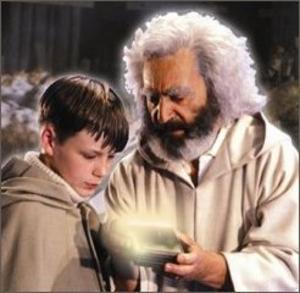
Kay Harker (Devin Stanfield) and Cole Hawlings (Patrick Troughton) holding the Box of Delights
What then, is the ‘Christmas Spirit’ that it contains? Why do we put the book down with a satisfied sigh? Well firstly, just as I have described already, it has all the gorgeous elements that dress the Christmas scene: snow, scrumptious food and delightful descriptions of Christmas entertainments, particularly at the Bishop’s palace when there is a party, dancing round the tree, Punch and Judy and lots of gifts, yummy food and crackers. Secondly there is magic in every page; whether it is talking animals, going into the past, flying cars and all the magic that the ‘Box of Delights’ can conjure. The most important element that gives it real depth though is the battle of good and evil. The villainous wizard Abner Brown has kidnapped all the church folk that are necessary to hold a special Christmas Eve service at the cathedral. He does so in order to find the Box of Delights and then finally just out of spite. So it is a battle to defeat his evil intentions, a battle fought with magic and courage, which eventually light and goodness defeats. Symbolically the cathedral is plunged into darkness by the evil acts of Abner Brown but just at the end, when the evil has been defeated, the cathedral lights are fixed and it ends with the service going ahead. We love this battle of good over evil. For a child it is lovely to feel that frisson of fear whilst in the comfort of the home. It makes life feel even better, to be able to see darkness and appreciate the light all the better.

